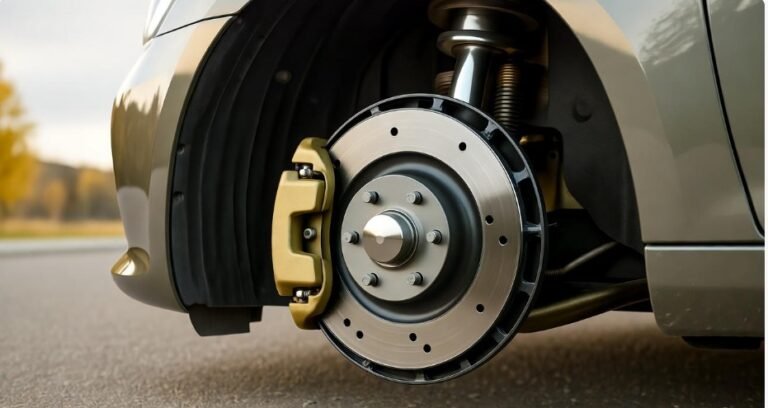How to Reset Loss of Pressure Audi: Complete Troubleshooting Guide

Driving an Audi is all about comfort, control, and confidence on the road. But when you see a warning light that shows loss of pressure in one or more tires, it can instantly change the way your car feels. You may notice the steering becomes less responsive, the ride begins to feel uneven, and there is this uneasy thought that something is not right. The Tire Pressure Monitoring System (TPMS) in your Audi is designed to help you catch tire issues early, but understanding how to reset it correctly is just as important. Many Audi owners see the warning light, fill up the tires, but the light simply stays on. This can be confusing and frustrating if you don’t know what steps to take next.
In this guide, we will walk through how to reset loss of pressure Audi in a clear and simple way. The goal is to help you not only reset the system but also understand what causes pressure loss and how to prevent future issues. We are going to take a friendly conversational approach here. Imagine we are sitting together, keys in hand, talking through this like two drivers helping each other out. We will go deep into details but keep it real, practical, and easy to follow.
Understanding Why Tire Pressure Matters in an Audi
Tire pressure plays a bigger role in your Audi’s performance than most people realize. When your tires are inflated correctly, your car delivers the smooth and precise driving feel Audi vehicles are known for. But when the pressure drops, even slightly, the car’s balance changes. You may feel the steering wheel become slightly heavier. You may notice that acceleration requires more effort. Sometimes the difference is so subtle that you only notice It when the alert appears on the dashboard.
Driving with low tire pressure can also cause:
-
Reduced fuel economy because the engine works harder
-
Faster tire wear due to uneven tread contact
-
Increased risk of tire blowouts at higher speeds
-
Longer stopping distance when braking
Your Audi is engineered to react to even small pressure changes. The TPMS light is not just a suggestion. It is your car telling you that something needs your attention before it becomes a bigger problem. When you learn how to reset loss of pressure Audi the right way, you maintain that safe and smooth driving experience.
Common Causes of Tire Pressure Loss in Audi Vehicles
Before you reset the system, it helps to understand what caused the pressure change. Tires naturally lose pressure over time. But some situations can speed up the process. Knowing these causes can help prevent repeated warnings.
Here are common reasons your Audi may show a loss of pressure alert:
| Cause | Description | Impact on Tire |
|---|---|---|
| Temperature Changes | Cold weather compresses air inside the tire | Pressure drops overnight |
| Slow Leaks | Caused by tiny punctures or worn valve stems | Pressure decreases gradually |
| Tire Damage | Nails, glass, potholes, or curbs | Pressure drops quickly or unevenly |
| Faulty TPMS Sensor | Sensor battery dies or unit malfunctions | Warning may appear even if pressure is correct |
Each of these situations can trigger the TPMS light. Even seasonal weather can change tire pressure enough to activate the warning. Winter mornings, for example, are notorious for making Audi drivers think they suddenly have tire trouble.
If you want a smooth driving experience, it is important to go step by step when dealing with pressure loss. Don’t just reset the system blindly. Make sure the tires are actually at the correct pressure before clearing the warning.
Step-by-Step Guide: How to Reset Loss of Pressure Audi
Once you have inflated your tires to the recommended pressure, you need to let your Audi’s TPMS system know that everything is back to normal. Here is where many owners get stuck. The reset is not automatic. You must manually tell the system to recalibrate.
Follow these steps:
1. Check the Tire Pressure Manually
Start by checking each tire with a reliable air pressure gauge. Do not rely only on gas station meters because they can be inaccurate. The recommended PSI for your Audi is listed:
-
Inside the driver’s door frame sticker
-
In the owner’s manual
Take your time. Even 2–3 PSI difference can affect the system.
2. Inflate the Tires to the Recommended PSI
If any tire is lower than recommended, add air. If a tire is overfilled, release a little until you hit the correct level. Make sure all four tires match the required pressure.
3. Turn the Ignition On (Do Not Start the Engine)
Press the Start/Stop button once, without pressing the brake pedal.
4. Open the Car Settings Menu
Use the center console and follow this path:
-
Press the Car button
-
Select Service & Checks
-
Look for Tire Pressure Monitoring
The wording may vary slightly depending on your Audi model.
5. Select the TPMS Reset or Store Tire Pressure Option
When the system asks if the new pressures should be stored, confirm by choosing Yes.
6. Drive the Car for a Few Minutes
The system recalibrates while driving. Usually, the warning light goes off within 5 to 15 minutes.
If the light stays on longer, we’ll discuss troubleshooting later in this article.
Why the Reset Sometimes Does Not Work at First Attempt
Many Audi drivers follow the reset steps but still see the warning signal. This does not always mean something is wrong with the system. Most of the time, it simply means the tire pressures still aren’t correct.
Here are reasons the reset may fail:
-
One tire is still slightly underinflated
-
A tire has a slow leak
-
The TPMS sensor battery is weak
-
The system didn’t have enough driving time to calibrate
Sometimes the issue is subtle. Even a single tire being 4 PSI lower than the others can confuse the TPMS. The key is patience and careful checking.
The Importance of Maintaining Proper Tire Pressure
Maintaining your Audi’s recommended tire pressure is essential for both performance and safety. Many drivers underestimate how much difference this one small detail makes. When tires are properly inflated, your Audi feels lighter on the road. The steering becomes more responsive, the ride smoother, and the fuel consumption lower. It is one of those simple details that greatly improves your daily driving routine.
Proper tire pressure also prevents wear and tear. Underinflated tires wear out faster and unevenly. Over time, that leads to frequent replacements, which can get expensive. Keeping your pressure correct not only protects your tires but also your wallet.
So, when you learn how to reset loss of pressure Audi, you are also learning how to maintain the stability and reliability of your vehicle.
Troubleshooting Persistent TPMS Warning Lights
Even after following the correct reset procedure, some Audi owners find the TPMS warning light refuses to turn off. Don’t panic—this is more common than you think. There are several troubleshooting steps you can take to pinpoint and solve the issue.
1. Inspect Tires for Slow Leaks or Damage
Sometimes, a small puncture or faulty valve stem may cause the tire to slowly lose pressure, even after inflating it. Look for:
-
Small nails or screws embedded in the tread
-
Cracks or cuts along the sidewall
-
Worn-out valve stems or missing caps
A visual inspection, combined with careful air pressure checks, often resolves persistent warnings. Remember, even a tiny leak of 1–2 PSI per day can trigger the TPMS repeatedly.
2. Check TPMS Sensors
Each tire has its own TPMS sensor. If a sensor is damaged or its battery is depleted, the system may incorrectly signal a pressure loss. Signs of a faulty sensor include:
-
Warning light that comes on randomly
-
Inconsistent readings across different tires
-
TPMS light stays on even after proper inflation and reset
In such cases, the sensor may need to be replaced at a tire shop or Audi service center.
3. Ensure Proper Reset Procedure
Double-check that you followed the reset steps accurately:
-
Ignition on, engine off
-
Car settings menu correctly accessed
-
Correct “Store Tire Pressure” option selected
-
Enough driving time allowed for recalibration
Sometimes skipping a step or rushing the process can prevent the system from registering the new pressures.
Tips to Prevent Future Loss of Tire Pressure
Preventing pressure loss is far easier than constantly dealing with warnings. Developing a few simple habits can save time, money, and stress:
-
Check tire pressure monthly: Even small deviations affect safety.
-
Inspect tires for damage: Avoid sharp objects, potholes, or curbs when possible.
-
Maintain sensor health: Replace TPMS sensors when battery life ends.
-
Adjust for weather changes: Tire pressure naturally fluctuates with temperature—check more often during winter.
-
Rotate tires regularly: Helps ensure even wear and accurate pressure readings.
By integrating these habits, you can reduce the likelihood of losing tire pressure unexpectedly and keep your Audi performing at its best.
How Driving Habits Affect Tire Pressure
You may not realize it, but your driving habits can influence tire pressure and trigger the TPMS warning. Aggressive driving, frequent braking, and high-speed cornering can generate heat in tires and temporarily affect pressure. Similarly, long periods of idling in extreme weather may also create minor pressure fluctuations. Understanding these influences helps Audi owners anticipate when a TPMS alert might appear, even if the tires are in good condition. Think of it like this: your tires “breathe” in response to conditions. Recognizing this behavior prevents unnecessary panic when the warning light comes on.
FAQs About Resetting Loss of Pressure in Audi
1. How long does it take for the TPMS light to turn off after resetting?
Typically, the warning light goes off within 5–15 minutes of driving after the reset. However, some models may require a few miles of travel to fully recalibrate.
2. Can I reset the TPMS myself or do I need a mechanic?
Most Audi models allow a self-reset using the center console settings. Only replace sensors or handle mechanical issues through a professional.
3. Will underinflated tires cause damage if I drive a short distance?
Even short trips on underinflated tires can increase wear and reduce fuel efficiency. Always inflate before driving whenever possible.
4. Can temperature changes trigger the TPMS light?
Yes. Cold mornings can reduce tire pressure enough to activate the warning. Warm weather can bring it back up naturally.
5. Is it safe to drive with the TPMS light on?
You can drive short distances to reach a service point, but prolonged driving with low pressure increases risk of blowouts, poor handling, and tire damage.
6. How do I know if a TPMS sensor is faulty?
If the warning light persists despite correct tire pressures and resets, a sensor may need replacement. Professional diagnosis confirms this.
7. Can I use aftermarket tire inflators for my Audi?
Yes, as long as they provide accurate readings. Always double-check with a manual gauge if unsure.
8. How often should I replace TPMS sensors?
TPMS sensors typically last 5–10 years or until the battery dies. Replacement is needed when the sensor fails to report pressure accurately.
Understanding the Role of Technology in Tire Safety
Modern Audi vehicles rely heavily on technology to maintain safety. The TPMS is not just a convenience—it actively prevents accidents and extends tire life. Learning to reset the system empowers you to work alongside this technology rather than against it. It’s like having a digital co-pilot who constantly monitors tire health. Ignoring warnings can lead to subtle handling problems, decreased fuel efficiency, and expensive tire repairs. By understanding how to reset loss of pressure Audi, you are taking control of your vehicle’s safety ecosystem.
Final Thoughts on Resetting Tire Pressure in Audi
Resetting the loss of pressure in your Audi is more than just turning off a warning light. It’s about ensuring your car performs optimally, driving safely, and protecting your investment in the tires. The process is straightforward if approached methodically:
-
Check and inflate tires correctly
-
Reset the TPMS using the vehicle’s settings
-
Monitor the warning light during your drive
-
Troubleshoot if necessary
Beyond just the technical steps, the bigger takeaway is the value of regular maintenance. Tire pressure is an easy thing to overlook, yet it affects performance, fuel efficiency, and safety in profound ways. Treat your tires well, and they’ll treat you with a smooth, reliable ride every time you hit the road.
By integrating these tips into your routine and understanding the reset procedure, you will never be caught off-guard by a sudden TPMS alert again. Driving an Audi should feel effortless, and mastering tire pressure maintenance is a simple but powerful way to make that happen.






